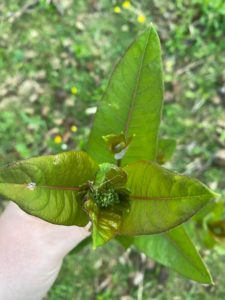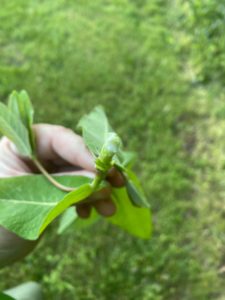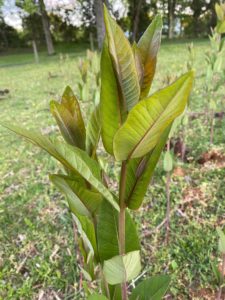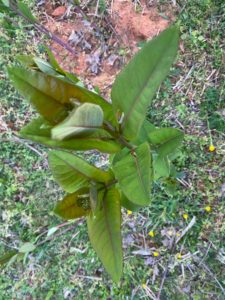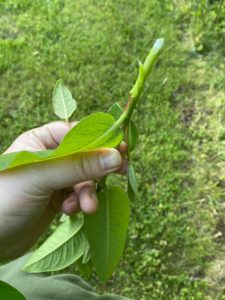Milkweed- Weed ID Wednesday
go.ncsu.edu/readext?684691
en Español / em Português
El inglés es el idioma de control de esta página. En la medida en que haya algún conflicto entre la traducción al inglés y la traducción, el inglés prevalece.
Al hacer clic en el enlace de traducción se activa un servicio de traducción gratuito para convertir la página al español. Al igual que con cualquier traducción por Internet, la conversión no es sensible al contexto y puede que no traduzca el texto en su significado original. NC State Extension no garantiza la exactitud del texto traducido. Por favor, tenga en cuenta que algunas aplicaciones y/o servicios pueden no funcionar como se espera cuando se traducen.
Português
Inglês é o idioma de controle desta página. Na medida que haja algum conflito entre o texto original em Inglês e a tradução, o Inglês prevalece.
Ao clicar no link de tradução, um serviço gratuito de tradução será ativado para converter a página para o Português. Como em qualquer tradução pela internet, a conversão não é sensivel ao contexto e pode não ocorrer a tradução para o significado orginal. O serviço de Extensão da Carolina do Norte (NC State Extension) não garante a exatidão do texto traduzido. Por favor, observe que algumas funções ou serviços podem não funcionar como esperado após a tradução.
English
English is the controlling language of this page. To the extent there is any conflict between the English text and the translation, English controls.
Clicking on the translation link activates a free translation service to convert the page to Spanish. As with any Internet translation, the conversion is not context-sensitive and may not translate the text to its original meaning. NC State Extension does not guarantee the accuracy of the translated text. Please note that some applications and/or services may not function as expected when translated.
Collapse ▲If you have been out walking your pastures or hayfields lately, you may have come across some actively growing milkweed. Milkweed is a perennial that starts growing in early spring. It grows and spreads quickly, as its seeds can travel long distances by wind alone. Milkweed has an intensive root system and may take some time to control. A great way to confirm it’s identity is to break it in half and you should see a milky substance ooze from the stem!
While there are some benefits of milkweed, it is not helpful in pastures or hayfields. In fact, certain species of milkweed can be toxic to livestock. According to USDA Poisonous Plant Research, milkweed poisoning occurs most frequently in goats, sheep, and cattle, and occasionally in horses. The toxicity levels are of most concern when the plant is actively growing, which would be now. It is most definitely worth noting that if your animals have an adequate food supply, they may not consume milkweed at all or in enough quantities to cause issues. However, if milkweed is not controlled and continues to spread, it may become more of a risk. Milkweed may thrive around corral, pen, and barn areas where if you are having to keep an animal confined, they may be more likely to eat it. Be sure to scout those areas often, as they can probably be pulled up by hand.
According to the USDA Poisonous Plant Research, “an average-sized sheep that eats 30-100 gms of green leaves of one of the more toxic species is likely to die of poisoning. It may die within a few hours or live 2 to 4 days.” That is 0.06-0.22 lbs of green leaves. Poisoning can also occur if the animals are fed hay with large quantities of milkweed in it. These facts result in good reason to consider controlling milkweed in pastures and hayfields, as well as making sure your livestock have plenty of grass or hay to eat instead.
Glyphosate is considered one of the best options to control milkweed, but you have to be careful to use it in pastures or hayfields, A couple options are spot spraying with a hand or backpack sprayer or using a wick applicator, also called a weed wiper. The wick applicator has to be used while the weeds are taller than the grass so that the glyphosate is only wiped onto the weeds and not the grass. If in small enough quantities, milkweed can be pulled by hand. Keep in mind that regardless of what control option you choose, you still need to keep an eye out for milkweed in future growing seasons.
Be sure to read the label of any chemical product before using.
Contact our local Soil and Water office to ask about renting a wick Applicator.